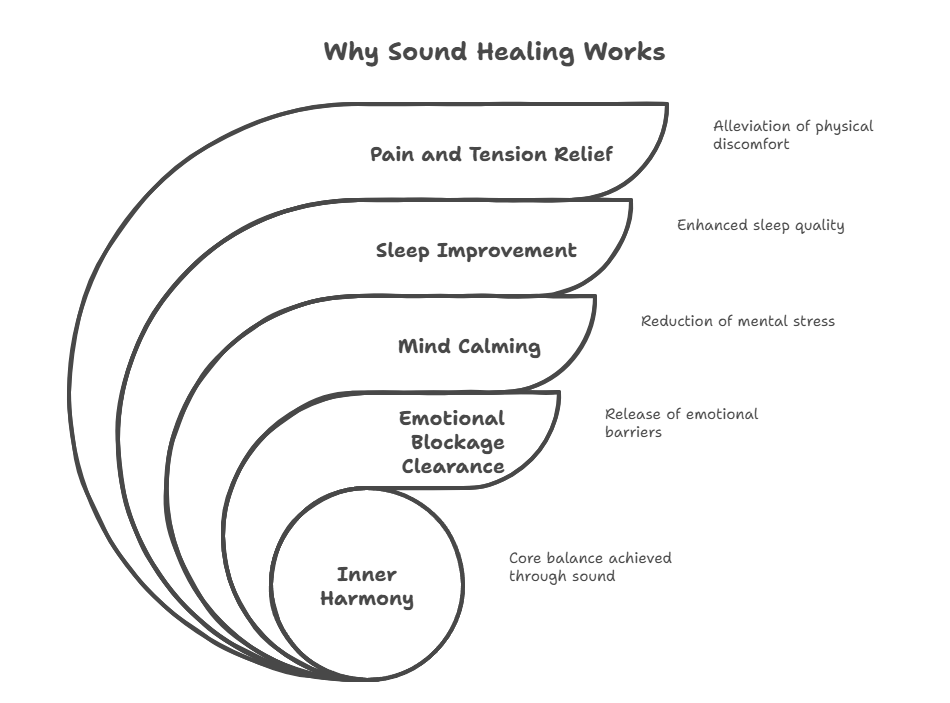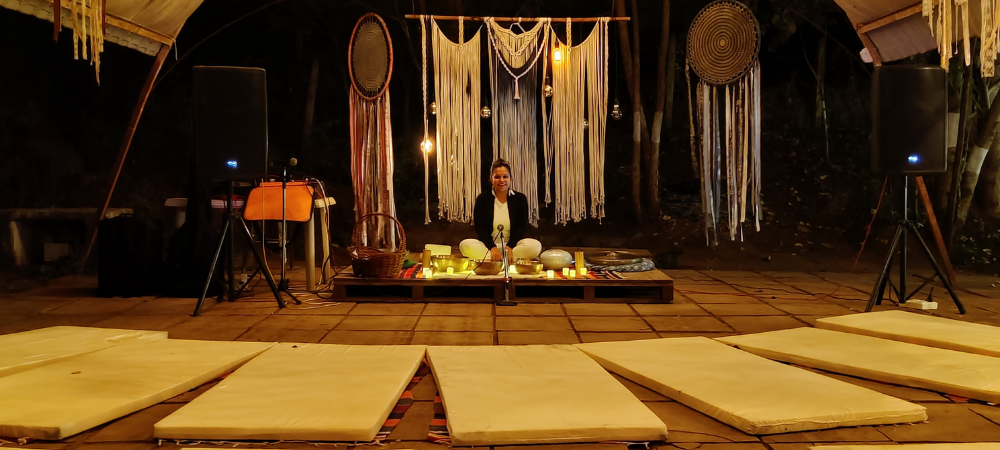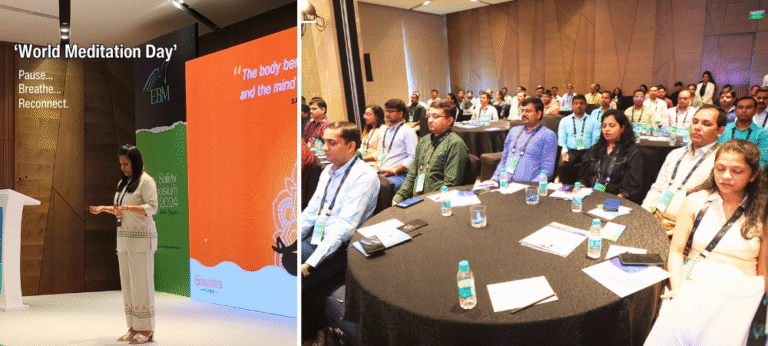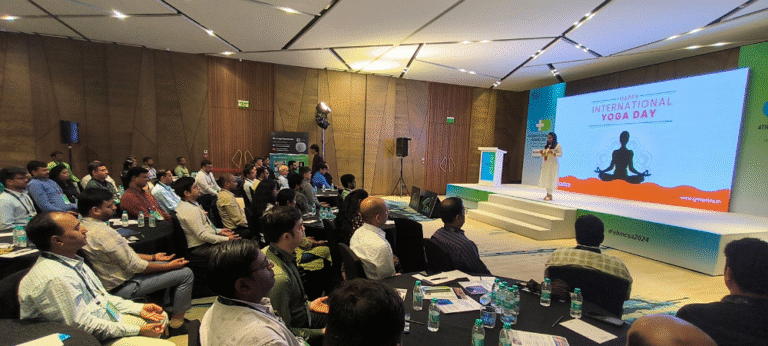Have you ever noticed how your foot starts tapping when your favorite song comes on? Or how a soft melody instantly makes you feel calm and peaceful? That’s the power of sound. But this isn’t just a coincidence or a feel-good moment. It’s the very science of how sound interacts with our body, brain, and energy.
Sound is not just something we hear.
It’s the foundation of creation.
Sound: The Beginning of Everything
Many ancient texts and modern scientists agree on one idea: everything began with sound. In spirituality, it’s often said “In the beginning, there was sound.” In science, we hear about the Big Bang theory—a massive explosion of energy and vibration that created the universe.
So at its very core, the universe is made of vibrations. And what is sound? It’s vibration that we can hear.
Every cell in your body, every thought in your mind, and every object around you has a vibrational frequency. This means we’re not just affected by sound—we are made of it.
Sound in Modern Science & Technology
You may be surprised to know that sound waves are used in some of today’s most advanced medical technologies:
- Ultrasound scans use high-frequency sound to see inside the body.
- Sonar and echocardiograms use sound to examine organs and detect disease.
- Focused sound therapy is now being studied to dissolve kidney stones or even tumors.
Science is catching up with what ancient healers already knew—sound has the power to see, shift, and heal.
Your Body Follows the Beat
Have you ever felt your body move automatically to a rhythm? Music has that effect on us. That’s because our nervous system and brain waves can synchronize with sound patterns.
This is called entrainment—where your brainwave frequency starts to match the rhythm of the external sound. For example, a slow, soothing sound can help your brain move from an anxious beta state to a calmer alpha or even theta state (which is where deep relaxation and healing occur).
It’s why music helps us study, relax, meditate, or even sleep better.
We Live in a Symphony of Words and Sounds
Sound isn’t just about instruments. It’s also the words we speak—to others and ourselves.
The way we talk to ourselves becomes our inner soundtrack. Words like “I can’t do this” or “I’m not good enough” create inner noise that can disturb our emotional harmony. On the other hand, kind, encouraging words become healing vibrations for the mind.
This is why sound healing isn’t just about bowls and gongs—it’s also about affirmations, mantras, chants, and mindful silence.
What Happens in a Sound Healing Session?
A sound bath is one of the most common forms of sound healing. In a session, you simply lie down and receive sounds from instruments like:
- Singing bowls (crystal or metal)
- Gongs
- Koshi chimes
- Tuning forks
- Ocean drums or rainsticks
- Vocal toning or humming
There’s nothing to do—just relax and receive.
As these frequencies wash over you, your nervous system starts to relax. Your breath slows down. Your mind becomes quieter. And most importantly, your body begins to activate its natural healing mechanism.
Healing Happens When You’re Not Stressed
Here’s the most important point: healing and growth happen only when the body is relaxed.
When we are stressed, the body is in “fight or flight” mode—tense, alert, and trying to protect itself. Blood flow is directed away from healing and digestion and towards survival. But when we feel safe and calm, the body shifts into “rest and repair” mode, which is when true healing begins.
Sound healing works beautifully because it helps your body switch gears from stress to calm—gently and non-invasively.
Why Sound Healing Works:
Let’s explore why more and more people are turning to sound therapy as a wellness practice:
1. It’s Non-Invasive
You don’t have to do anything. There’s no pressure to perform, no pills to swallow, no difficult postures to hold. Just lie down, close your eyes, and let the sounds do their work.
2. It Creates Inner Harmony
Each part of your body has its own frequency. When life’s chaos throws us off balance, sound helps retune the body back to harmony.
3. It Calms the Mind
People often say they go deeper in meditation during a sound bath than through traditional meditation. That’s because sound gives your mind something gentle to focus on, which makes letting go of thoughts easier.
4. It Clears Emotional Blockages
Vibrations move through the body like water—shaking things up. Many people report emotional release during sound healing, such as crying or feeling a sudden lightness.
5. It Improves Sleep
The calming frequencies help reset your circadian rhythm and promote better quality rest.
6. It Helps with Pain and Tension
Low-frequency vibrations can relieve physical pain by improving blood circulation, reducing inflammation, and relaxing tense muscles.
Sound healing is not new. It’s been around for centuries:
- Tibetan monks used singing bowls and chants.
- Egyptians used sound chambers in pyramids for healing.
- Hindus and Buddhists chant mantras like “Om” to tune into cosmic vibration.
- Even Aboriginal cultures used the didgeridoo for healing rituals.
Today, we have the science to back this ancient wisdom. And that’s why sound healing is growing fast across wellness studios, hospitals, and even corporate spaces.

My Experience as a Sound Meditation Facilitator
In my sessions, I’ve seen people walk in tired, anxious, or low on energy—and leave with a calm smile, glowing face, and a lighter heart. Some fall asleep during the session, others have insights, some release tears they didn’t know they were holding.
All they did was lie down and listen.
That’s the magic of sound.
Final Thoughts: Healing is About Flow
Words like flow, vibration, energy, tune in, and harmony are more than just metaphors. They are reminders that our body, mind, and soul are made to vibrate in harmony with life.
When we lose that rhythm, sound healing gently helps us find our way back.
So next time you feel stressed, anxious, or disconnected, don’t force yourself to “fix” it. Try a sound healing session. Just receive. Let the vibrations do their work.
And remember: sometimes, the best way to heal is to simply… listen.












